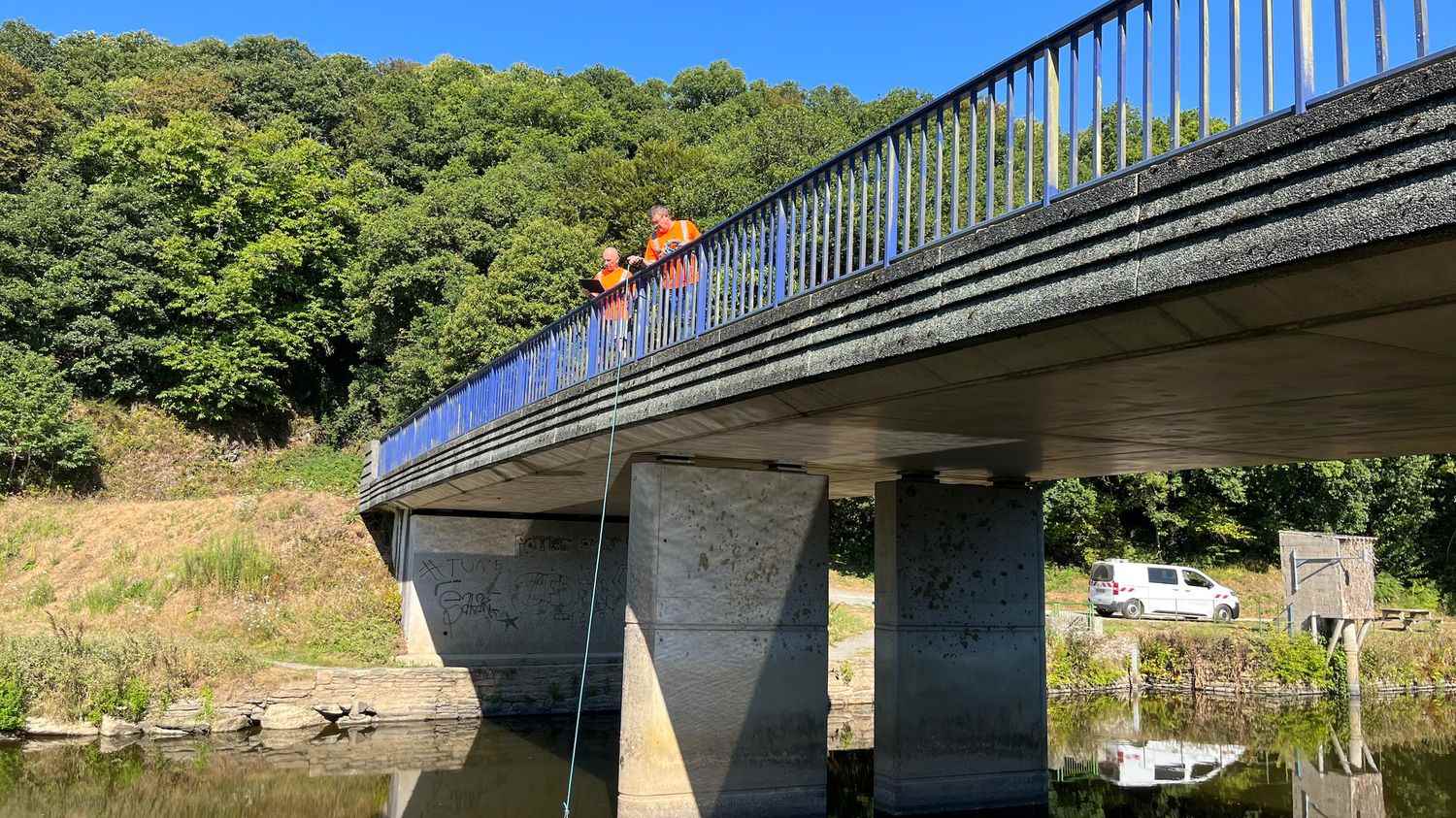From a bridge, on a canalized part of the Hyères, in Finistère, Pierre-Antoine Rousseau, hydrometer, crosses a small foam board from one bank to the other, using a rope. “The object of the game is to calculate the flow of the riverhe explains. This equipment sends us information on the PC held by my colleague who receives the data live.” After six crossings, Frédéric Gellé, the team’s second hydrometer, receives the information from the doppler – the device used by the hydrometers – on his computer.
“There, I have 100 liters per second. An average flow at this place is three or four cubic meters per second, so there it is thirty times less.”
Frédéric Gellé, hydrometerat franceinfo
Because in addition to the speed, it is necessary to measure the height of the water: Frédéric measures it with a scale. “We are five centimeters below navigation level”, he shows. These two data allow precise measurement of the flow of the river.

In Brittany, the departments of Finistère and Côtes d’Armor raised their drought alert to the maximum level at the start of the week, and imposed new restrictions on water use. This decision is taken on the basis of the low water operations, that is to say the lowest measurement of the rivers, carried out by hydrometers of the DREAL (the Regional Department for the Environment, Planning and Housing). At the moment, three pairs of hydrometers criss-cross the rivers of the region every day, because of the successive heat waves.
In Brittany, there are 170 stations on the rivers, “they measure the height of the water every six minutes”, says Frédéric Gellé. This data allows them to determine the stream they are going to gauge. Since there are sometimes errors, the hydrometers are there to refine and update the data on the lower streams. Hydrometers are also responsible for cleaning and clearing obstacles that obstruct the flow of the river, such as dams or branches.

In July, hydrometers in the region have already taken 132 measurements compared to 39 in July 2021, because the situation is changing very quickly: “We were announcing a little more water than what we measured, so we’re going to see the drop”. Frédéric Gellé already came here last week, usually, it’s once a month. “The pile of stones, which is in front of ushe points to, normally it is practically at the water’s edge at this time. It’s not as open as it is now.” And yet, this low water level has already happened: “The river is something a little alive, so we come to years like 1976 when there were very, very low flows”, he adds. Their measures are monitored very closely, as the prefectures rely on this data to issue water restriction orders.
“We observe this kind of level rather towards the end of August or the beginning of September, but there are already nine completely dry stations in Brittany.”
Frédéric Gellé, hydrometerat franceinfo
“In Brittany, 80% of surface water is used to make drinking water. Surface water, i.e. rivers, is a real challenge in Brittany”, he concludes. This drought situation should last, because in July, Brittany experienced a rain deficit of 94%.
Monitoring of rivers in Brittany: report by Benjamin Recouvreur
to listen
The data collected in the field is analyzed and made available on various sites such as vigicrues.gouv.fr or hydrologie-bretagne.fr.
